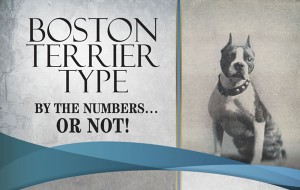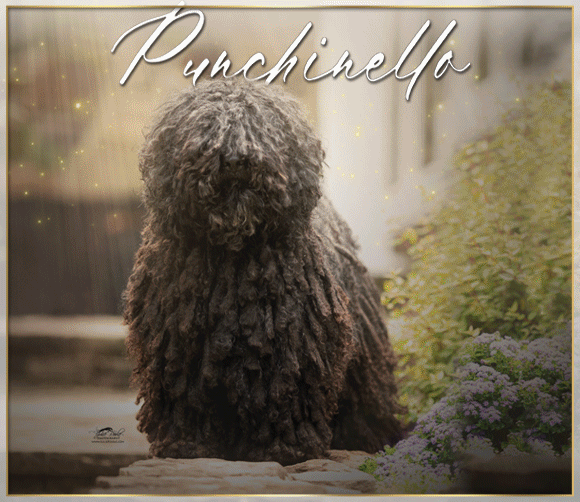Boston Terrier Type – By The Numbers… Or Not!
Click here to read the complete article
 By Amy Fernandez
By Amy Fernandez
Technology seems to slowly, steadily pervade every corner of life. For instance, how often did algorithms come up in conversation ten years ago? Now there’s an algorithm capable of calculating and forecasting every quirk and fancy of human nature. Clearly, I am skeptical but I think I can make a pretty good case with the Boston Terrier. All that data concerning past performance, risk assessment, and mathematical probabilities goes right out the window.
Generally considered America’s quintessential breed, it literally sprang outta nowhere before this sport even qualified for that definition. As the magnificent James Watson said, “although the raw material was imported from England, the Boston Terrier was ‘made in America’ and that within the memory of men who are a far way from being in their dotage.” Watson wrote that in 1907, which might suggest that massive disputes regarding Boston Terrier type and development were settled by then. Ha!
That’s just one aspect of the breed which totally defies formulaic logic. As far as evolution of type, Boston form didn’t follow function since, in the conventional sense, it never had one. I prefer eyewitness accounts so here’s a little more Watson. Recalling the Boston Terrier entry at the 1878 Massachusetts Kennel Club show, he wrote, “These dogs were not called Boston Terriers but were first all lumped in with Bull Terriers.” Boston prototypes emerged as a tangential variant. Such genetic drifts aren’t uncommon, but they rarely become apparent without benefit of hindsight. However, this one quickly gained momentum and was soon dubbed the Roundheaded type.
Watson detailed the breed’s foundation based on mass export of bull and terrier crossbreeds in the decades following Britain’s ban on dog fighting. That unsavory activity was destined to remain legal here for quite a while longer but it wasn’t the only source of demand. As competitive conformation heated up all over wealthy New England, any reasonably spiffy dog qualified as a show prospect. The rules were pretty rough. AKC was years away and the Kennel Club was just getting its legs. In contrast, dog breeding–especially this focused sector–was an entrenched hierarchical industry.
Click here to read the complete article

Short URL: http://caninechronicle.com/?p=191259
Comments are closed











